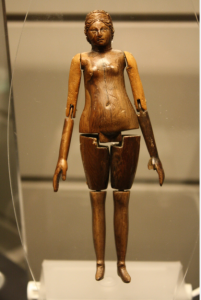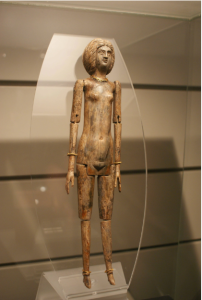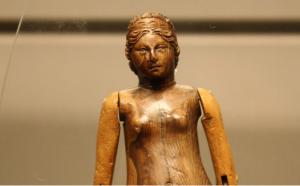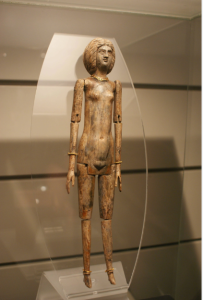Unearthing Childhood from Antiquity
In the heart of Rome, a city layered with history, a poignant discovery sheds light on the everyday lives of its ancient inhabitants. Found within an 8-year-old child’s grave, an ivory doll—crafted nearly 1800 years ago—whispers stories from a distant past. This artifact not only offers a glimpse into Roman craftsmanship but also serves as a tangible connection to the universality of childhood across the ages. This blog post delves into the significance of this ancient toy, exploring what it reveals about Roman society, family life, and the cherished bond between children and their playthings.

The Doll: A Masterpiece of Ancient Craftsmanship
Carved from ivory, a material prized for its beauty and durability, the doll is a masterpiece of ancient Roman craftsmanship. Its intricate details suggest it was a treasured possession, likely cherished by its young owner as a modern child would a favorite toy. The images accompanying this post capture the doll’s delicate features, from its carved hair to the articulation of its limbs, allowing it to be positioned in various postures. Such sophistication in a child’s plaything speaks volumes about the Roman appreciation for art and the importance placed on childhood and play.

A Window into Roman Domestic Life
The discovery of the ivory doll in a child’s grave provides a rare window into the domestic life of ancient Rome. Toys, especially those as elaborate as this doll, indicate the presence of affection within the family unit, challenging the notion that ancient societies were devoid of such sentimentality. This doll tells us that Roman children, much like children today, found comfort and joy in their playthings, using them to mimic and understand the world around them.
The burial of the doll with its owner underlines the emotional value attached to it; it was not merely a toy but a companion that accompanied the child even in death. This practice reflects the Roman beliefs surrounding death and the afterlife, suggesting a desire to provide comfort and protection for the deceased in their journey to the beyond.

Preserving the Echoes of Ancient Childhood
The ancient Roman ivory doll serves as a poignant reminder of the continuity of human emotion and the universal experience of childhood. As archaeologists continue to unearth such discoveries, they offer us the opportunity to connect with our ancestors in a deeply personal way, transcending the barriers of time and culture. The preservation of these artifacts is crucial, not only for academic study but for the insights they provide into the daily lives, hopes, and loves of those who lived centuries ago.
In conclusion, the discovery of the ivory doll in an 8-year-old child’s grave in Rome brings the past to life in a uniquely intimate manner. It serves as a testament to the skill of Roman artisans, the values of Roman society, and the timeless nature of childhood. Through such ancient discoveries, we are reminded of the common threads that bind humanity across ages, offering us a glimpse into the lives of those who walked the earth long before us.



